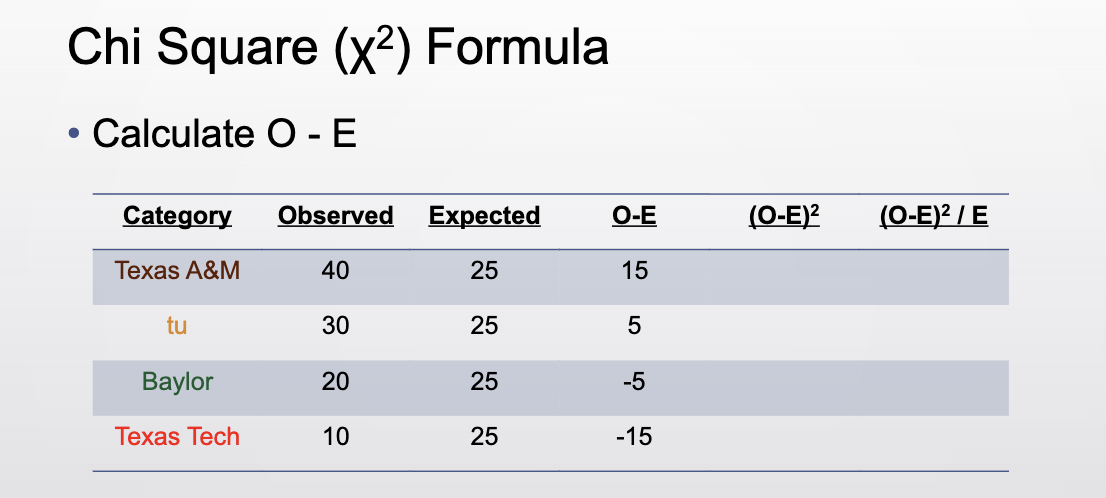Chi Square Test
Parametric Tests
make assumptions about the distribution of data
assumptions are key to the ideas behind things like t-tests and ANOVA
What conditions are required for parametric tests
continuous data
normally distributed
similar variances
large enough sample sizes
1/11
There's no tags or description
Looks like no tags are added yet.
Name | Mastery | Learn | Test | Matching | Spaced |
|---|
No study sessions yet.
12 Terms
Parametric Tests
make assumptions about the distribution of data
assumptions are key to the ideas behind things like t-tests and ANOVA
What conditions are required for parametric tests
continuous data
normally distributed
similar variances
large enough sample sizes
Nonparametric Tests
do not use the same assumptions
sometime it uses counts which cannot be
continuous
normally distributes
have variance
What is the most common nonparametric test
CHI SQUARE TEST

Why is the Chi Square Test a nonparametric test
compares frequencies of different groups
What is the Chi Square (x²) test
is the distribution of these groups different than what we would expect is variable of interest truly random
Chi Square approximates the overall size of the difference
This is determined by comparing the expected data to the actual data
Null Hypothesis (4 groups)
Null: G1 = G2 = G3 = G4
Research Hypothesis (4 groups)
Research: G1 ≠ G2 ≠ G3 ≠ G4
How to set up the Chi Square test

How do you interpret a:
CV = 7.82
x² = 20
reject the null
interpretation: the distribution across the groups is not equal
What report when reporting a chi square test
The x² and what it tells us
report degree of freedom
what does the obtained value tell us
what doe the p value tell us

Write a report for this example:
x² = 20
CV = 7.82
A chi square test revealed a difference in college
preference among high school seniors in Texas, χ2(3) =
20, p < .05. More students favored Texas A&M (40%) than
any other school, with the University of Texas the second
most popular school (30%), followed by Baylor (20%) and
Texas Tech (10%).